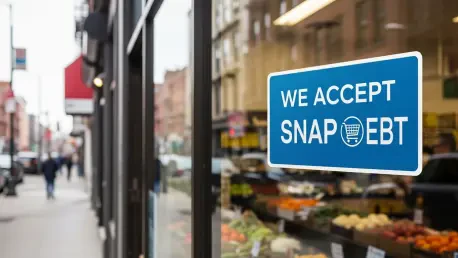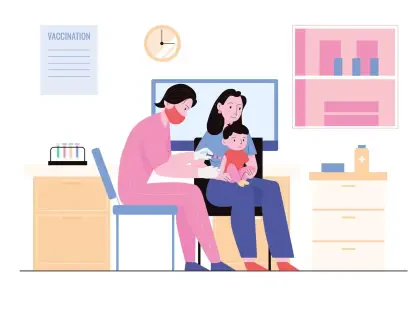As we dive into the complexities of federal nutrition assistance programs, I’m thrilled to sit down with Donald Gainsborough, a political savant and leader in policy and legislation at the helm of Government Curated. With his deep expertise in agricultural policy and government operations, Donald offers invaluable insights into the USDA’s recent decision not to use contingency funds for SNAP benefits during the ongoing government shutdown. In this conversation, we’ll explore the legal and logistical challenges behind this decision, the impact on millions of Americans, and the broader implications for state and federal responses to funding crises.
Can you walk us through the USDA’s reasoning for not tapping into the $6 billion contingency fund for SNAP benefits in November, despite the government shutdown?
Certainly. The USDA’s stance, as outlined in their recent memo, hinges on a legal interpretation that the contingency fund isn’t meant for situations like a government shutdown. They argue that the fund is designated for emergencies such as natural disasters, not for funding lapses due to congressional gridlock. Even though there’s a substantial amount in reserve, the department believes using it in this context would go against the fund’s intended purpose and could set a problematic precedent for future budget disputes.
How does the USDA define the specific purpose of the contingency fund, and why doesn’t a shutdown qualify under that definition?
The USDA defines the contingency fund as a resource for unexpected crises that directly disrupt food assistance needs—think hurricanes or floods that spike demand for aid. A shutdown, in their view, is a political and budgetary issue, not a programmatic emergency. They’re drawing a line between a lack of appropriations and a disaster-driven shortfall, emphasizing that their hands are tied by how the law frames the fund’s use, even if the impact on recipients feels like an emergency.
There was an earlier USDA shutdown plan from September 30th that seemed to allow the use of this fund for SNAP during a funding lapse. What shifted in their approach since then?
That’s a critical point. The September 30th plan explicitly suggested that the multi-year contingency fund could be used to maintain SNAP operations, including benefits and state administrative costs, during a shutdown. What changed appears to be a reevaluation of legal constraints or perhaps internal policy pressures. Between that initial plan and the recent memo, the USDA seems to have backtracked, prioritizing a stricter interpretation of the fund’s purpose. It’s a notable pivot that’s raised eyebrows among lawmakers and advocates.
Speaking of that earlier plan, it’s no longer available on the USDA’s website. Why do you think it was removed, and what does that signal about their current stance?
The removal of the plan from the USDA’s website suggests they’re distancing themselves from that initial position. It could be an attempt to avoid confusion or to align public messaging with their current legal stance. It signals a deliberate effort to close the door on any perception that the contingency fund is an option right now. By taking it offline, they’re likely trying to manage expectations and avoid fueling demands to reverse their decision.
Let’s talk about the real-world impact. How is this ongoing shutdown affecting the over 42 million Americans who depend on SNAP benefits?
The impact is profound and immediate. For over 42 million people, SNAP is a lifeline for basic nutrition. With November benefits at risk, families are facing uncertainty about how they’ll afford groceries. Many live paycheck to paycheck, and a delay or lapse in benefits could mean skipped meals or reliance on already strained food banks. This isn’t just a policy issue—it’s a human crisis unfolding across every state, hitting vulnerable populations like children and the elderly hardest.
If states step in with their own funds to cover SNAP benefits, the USDA memo says they won’t be reimbursed. Why is there no mechanism for reimbursement in this scenario?
The USDA’s position is rooted in current law, which doesn’t provide for reimbursement if states cover SNAP costs during a federal funding lapse. The program is structured as a federal responsibility, and there’s no legal pathway to backfill state spending in this context. It’s a harsh reality that places states in a bind—either they let recipients go without, or they bear a financial burden with no guarantee of federal support later. It underscores how inflexible the system can be during a crisis like this.
Given that constraint, how are states expected to manage the financial strain if they choose to support SNAP recipients on their own?
States are largely on their own here. They’d need to pull from their budgets, which are often already stretched thin, or redirect funds from other programs. Some might lean on emergency reserves or seek private donations to bolster food assistance, but those are stopgap measures at best. The USDA hasn’t offered much in the way of concrete guidance, leaving states to navigate this uncharted territory with limited resources and high stakes for their residents.
We’ve seen Democrats in Congress, along with some Republican lawmakers, urging the USDA to use the contingency fund or reprogram other funds. How has the USDA responded to this pressure?
The USDA has held firm so far, sticking to their legal interpretation that the contingency fund isn’t applicable and that reprogramming funds poses significant risks to other critical programs like school meals or infant formula support. Their public statements emphasize that the best solution is for Congress to end the shutdown. While they’ve acknowledged the concerns from lawmakers, there’s been no indication of a shift in policy, even with bipartisan calls for action.
On that note, the USDA has already shifted funds to support programs like WIC and school lunches during the shutdown. Why isn’t a similar strategy being applied to SNAP?
It’s a matter of scale and legal flexibility. Programs like WIC and school lunches are smaller in scope compared to SNAP, which serves over 42 million people and requires billions monthly. The USDA has more limited transfer authority with SNAP, and they’ve expressed concern that pulling funds from other areas would create a domino effect, undermining nutrition support across the board. They’re prioritizing what they see as manageable reallocations while arguing that SNAP’s shortfall is too large to address without new appropriations.
Looking ahead, what is your forecast for the future of SNAP funding and federal nutrition assistance programs if shutdowns or funding lapses become more frequent?
If shutdowns become a recurring issue, we’re looking at a precarious future for SNAP and similar programs. Without structural changes—like clearer legal authority to use contingency funds during lapses or better long-term appropriations planning—millions will repeatedly face the risk of disrupted benefits. It could also strain state budgets and local charities beyond capacity. My forecast is that pressure will mount for Congress to insulate nutrition assistance from political brinkmanship, but achieving that consensus in a polarized environment will be a steep challenge. We might see more patchwork solutions in the short term, but they won’t address the root instability.









